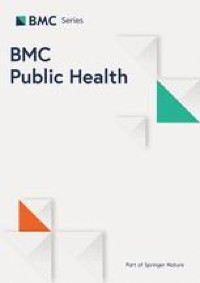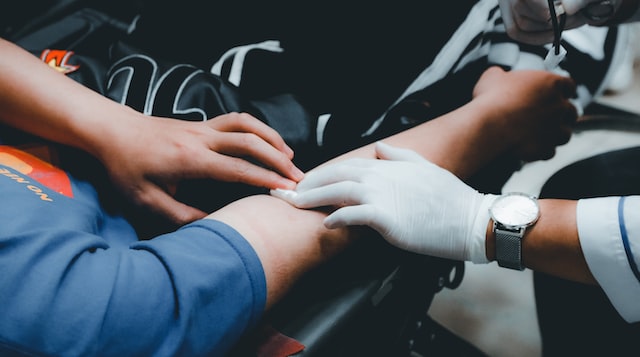
We surveyed MSM participants recruited by local social workgroups from three cities in China to assess their awareness and willingness to use chemoprophylaxis. Our data suggested that most MSM had heard of HIV chemoprophylaxis before, but only a few of them had heard of syphilis chemoprophylaxis. Chemoprophylaxis appeared to be highly accepted if it was safe and freely provided, and we found that most of the MSM preferred PEP over PrEP, both in HIV and syphilis chemoprophylaxis. In addition, we realized that drug side-effects constituted the major barrier to acceptance of chemoprophylaxis by MSM. Syphilis chemoprophylaxis with doxycycline is a novel strategy that has not yet gained wide acceptance. To our knowledge, this is the first study to explore awareness and willingness in both syphilis and HIV chemoprophylaxis among MSM in China.
The awareness of syphilis chemoprophylaxis was quite low, compared with HIV chemoprophylaxis (28.83% vs. 64.97%). In fact, the chemoprophylaxis for STIs remains a brand-new concept, compared with HIV chemoprophylaxis. Therefore, it is necessary to strengthen science popularization and education among MSM in China, introducing up-to-date STI control or prevention technologies towards them. We found that those who think it is necessary for syphilis chemoprophylaxis were more likely to heard of syphilis chemoprophylaxis before, and it agreed with previous study that concerns about contracting STI will promote MSM to seek for more prevention measures towards STI [11]. Interestingly, we found that if one’s friends or associates were undergoing or had undergone chemoprophylaxis, then this individual would be more likely to know about PrEP/PEP as well. As a result, imparting knowledge of chemoprophylaxis to certain individuals could help to address additional people indirectly, and thus contribute to community connections.
Notably, willingness to use syphilis chemoprophylaxis was as high as 78% and was higher than most of results shown in previous studies, as other authors reported acceptability rates ranging from 40 to 80% [12, 14, 15]. Importantly, this acceptance rate was based on the premise that preventive drugs are safe and free of charge; thus, MSM were willing to accept chemoprophylaxis if barriers could be removed, as side-effects and drug costs comprised the top two barriers according to our investigation. In addition, individuals who had used doxycycline before were significantly less likely to accept syphilis chemoprophylaxis, suggesting that they may had side-effects after using doxycycline before. Hopefully, the doxycycline enteric-coated capsule has less side-effects compared with traditional doxycycline pills and may be the appropriate choice in chemoprophylaxis in the future [16, 17]. Besides, recent studies found that there were no patients (who had syphilis or chlamydia trachomatis infection) with treatment failure due to doxycycline antimicrobial resistance during long period of treatment [18, 19]. It suggested that long-time chemoprophylaxis with doxycycline may be safe as well, but still need more evidence to prove it.
Participants’ willingness to accept PEP was considerably higher than to accept PrEP in our study. This result was similar to the prior studies in Toronto (willingness to use syphilis PrEP vs. syphilis PEP, 42.3% and 66.9%, respectively; and willingness to use HIV PrEP vs. HIV PEP, 87.7% and 91.0%, respectively) and Vancouver (willingness to use syphilis PrEP vs. syphilis PEP, 46.5% and 51.4%, respectively) [12]. Such results are reasonable since accepting PrEP entails higher economic costs and additional pills to be taken by MSM. Intriguingly, only those who had PrEP/PEP experience previously were more likely to choose PrEP in both HIV and syphilis chemoprophylaxis. A small Australian study had showed that high-risk GBM preferred daily STI PrEP than PEP [13]. We posit that people with PrEP/PEP experience are more likely to develop the habit of taking treatment drugs in a timely fashion; however, to those who are new to chemoprophylaxis, PEP may be the preferred choice.
Our study was subject to several limitations. First, the participants were enrolled via a local social group and all the surveys were conducted online, which could have caused recruitment bias. Second, the responses to questionnaires were self-reported by participants, and this may have led to social-desirability bias and recall bias. Third, our investigation entailed a cross-sectional design, making it difficult to perceive causal relationships. Therefore, we used concomitant variables in our correlation analysis to reduce these impacts. Fourth, we asked participants’ willingness to take prevention drugs under the assumption that drugs are safe and freely provided, which may increase their motivations. Fifth, we didn’t show the efficacy differences between PrEP and PEP to participants. Most published studies showed high efficacy of HIV PrEP and syphilis PEP only, but lack evidence for HIV PEP and syphilis PrEP, and it may be a factor that will affect their choses. Lastly, only three cities were chosen for our survey, and the results may thus not have been representative of the overall situation in China.
Despite the aforementioned limitations, to our knowledge, this is the first study to investigate the awareness of and willingness toward syphilis chemoprophylaxis among Chinese MSM. We found willingness towards syphilis chemoprophylaxis were higher than expected, indicating the possibility of promotion. New approaches to resolving STIs such as syphilis are needed since the chemoprophylaxis for HIV has provided a favorable modality for reference, and it may be possible to combine these two preventive strategies together. Although the widespread promotion of syphilis chemoprophylaxis should be based on more robust data regarding the safety and cost-effectiveness of drugs, we posit that this strategy may constitute a promising and novel direction for STIs prevention in the future.







